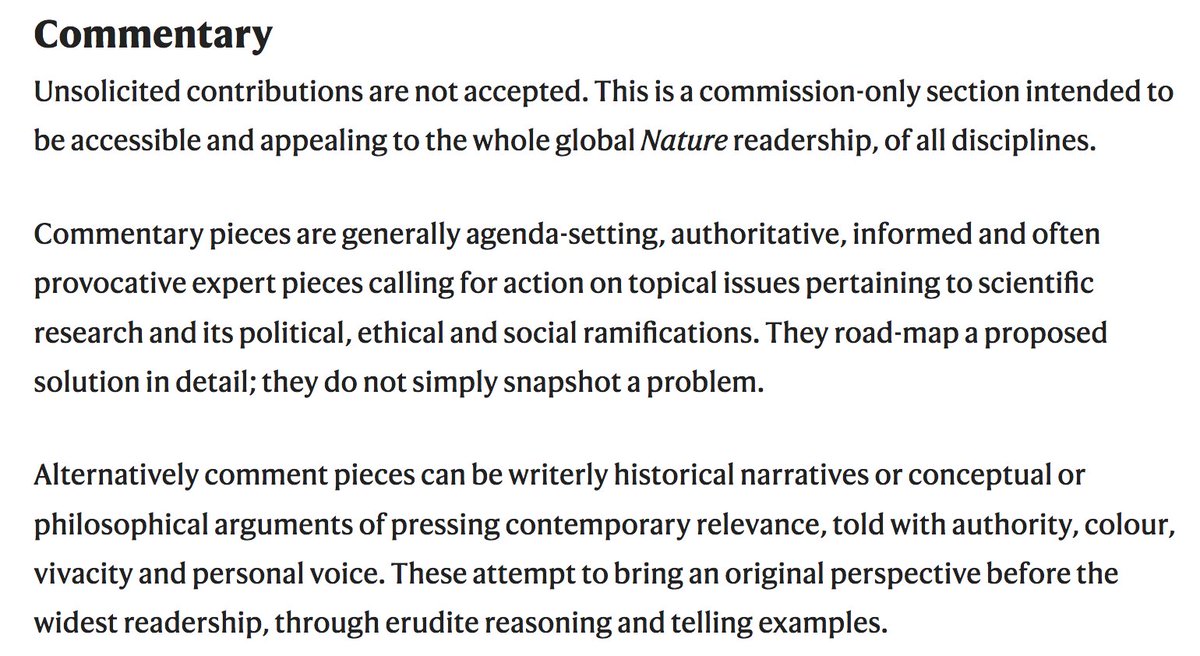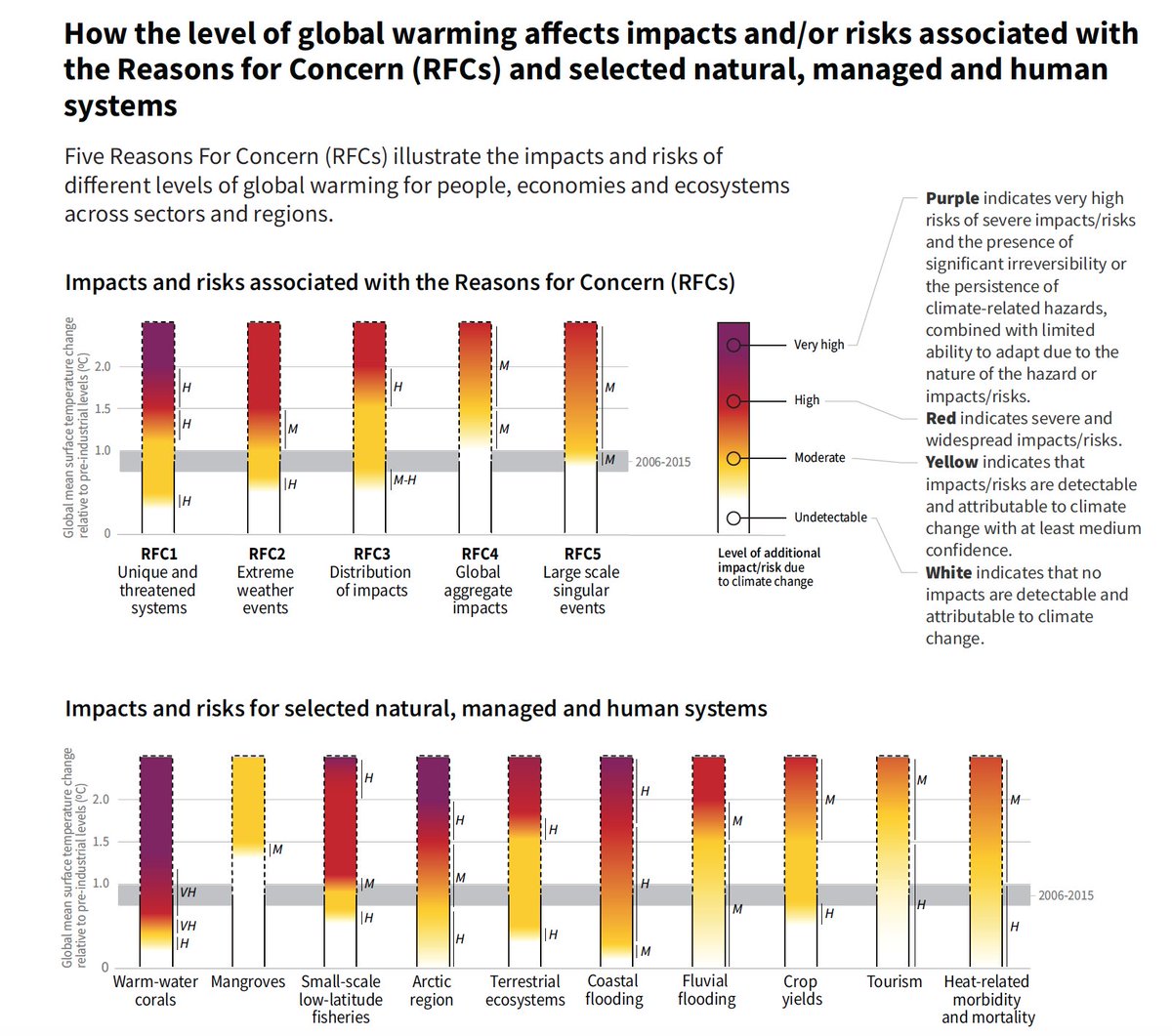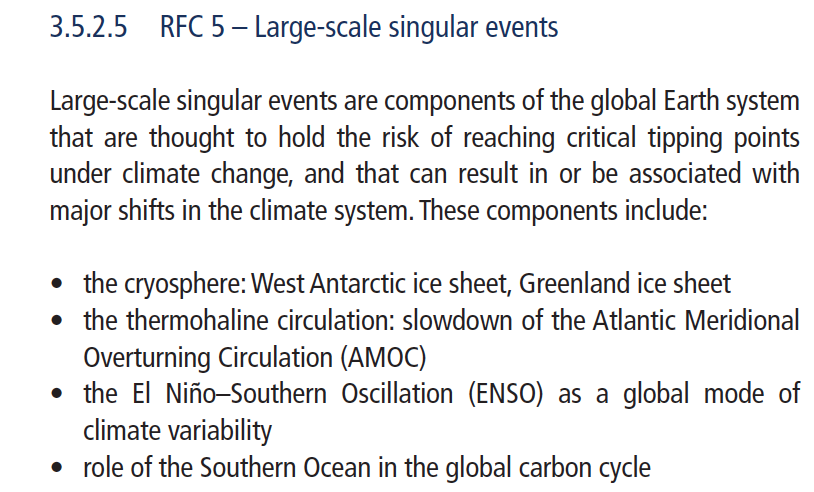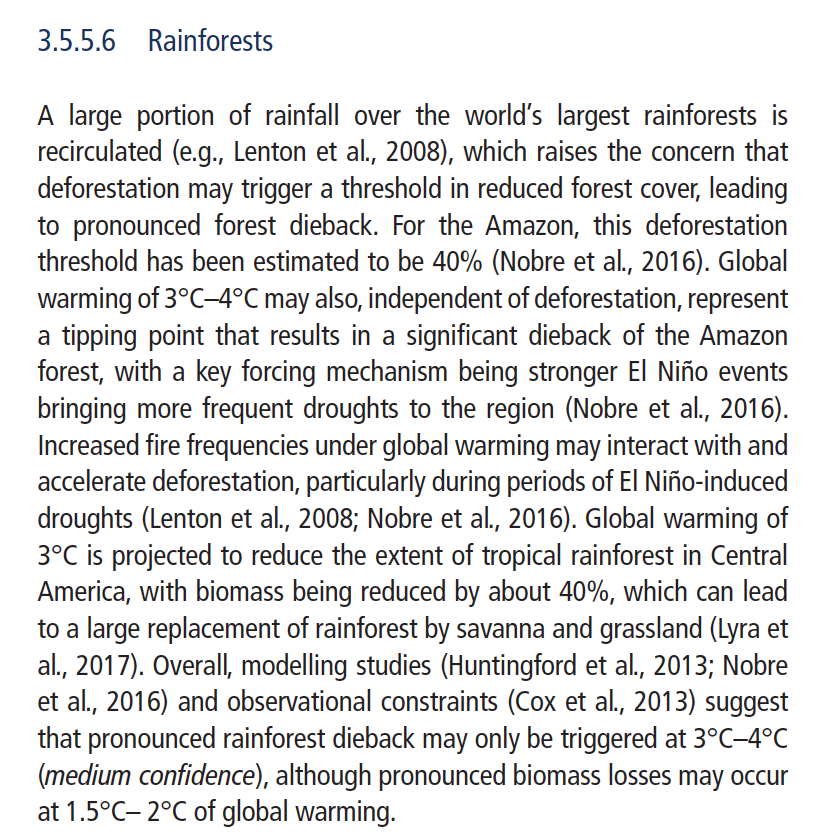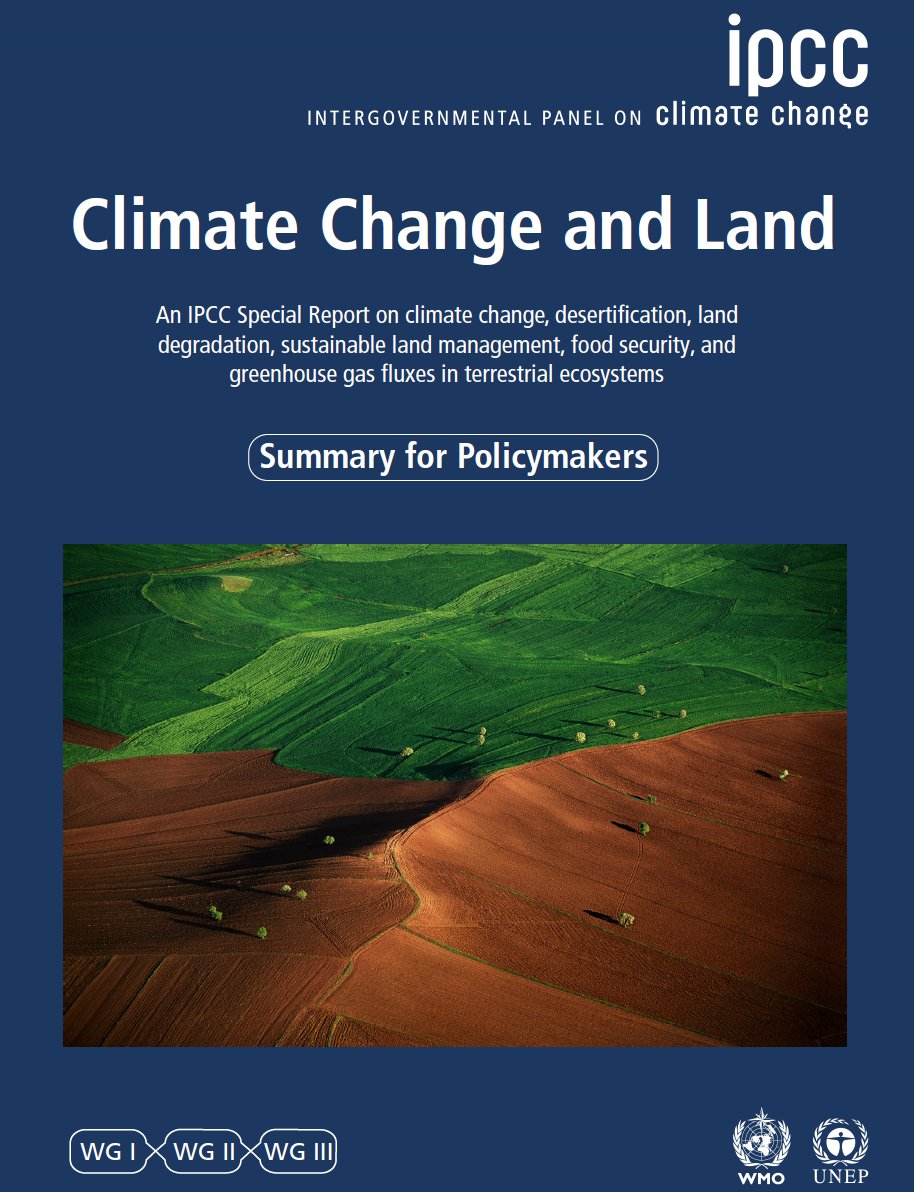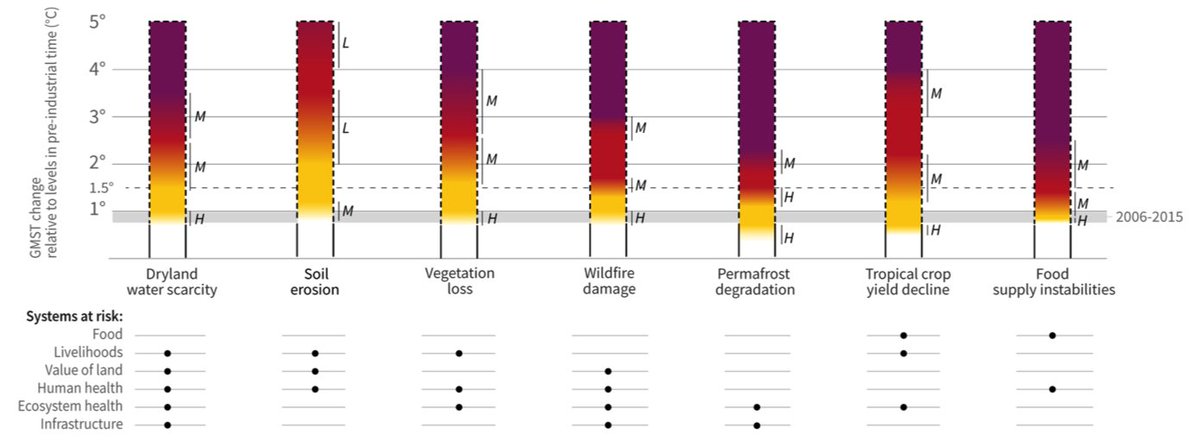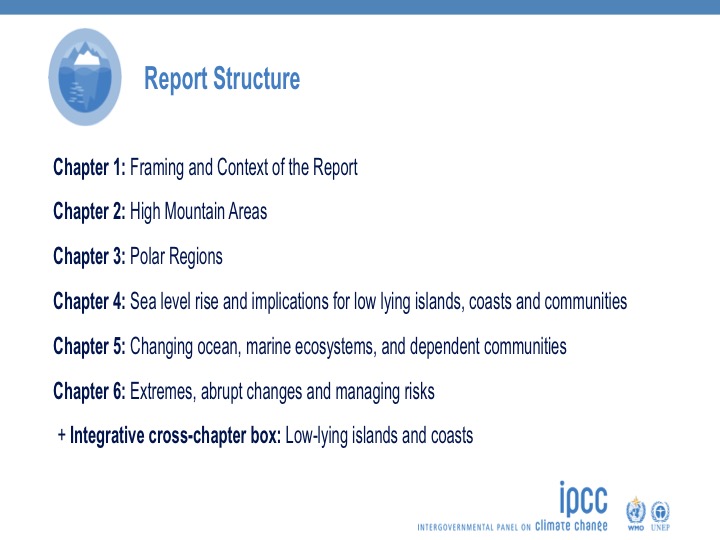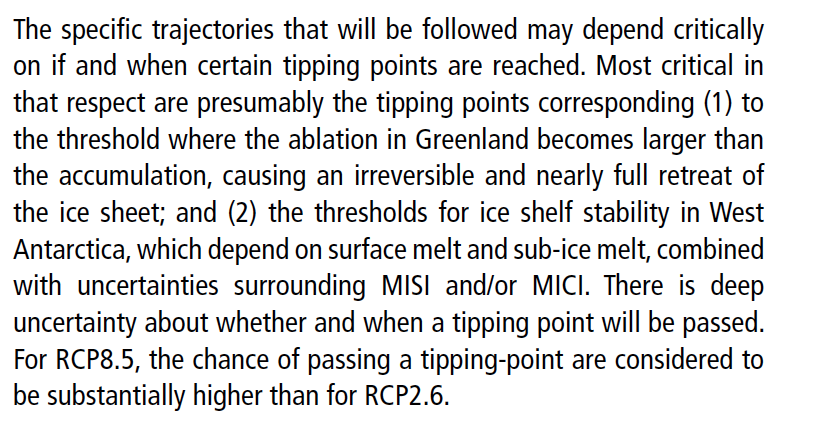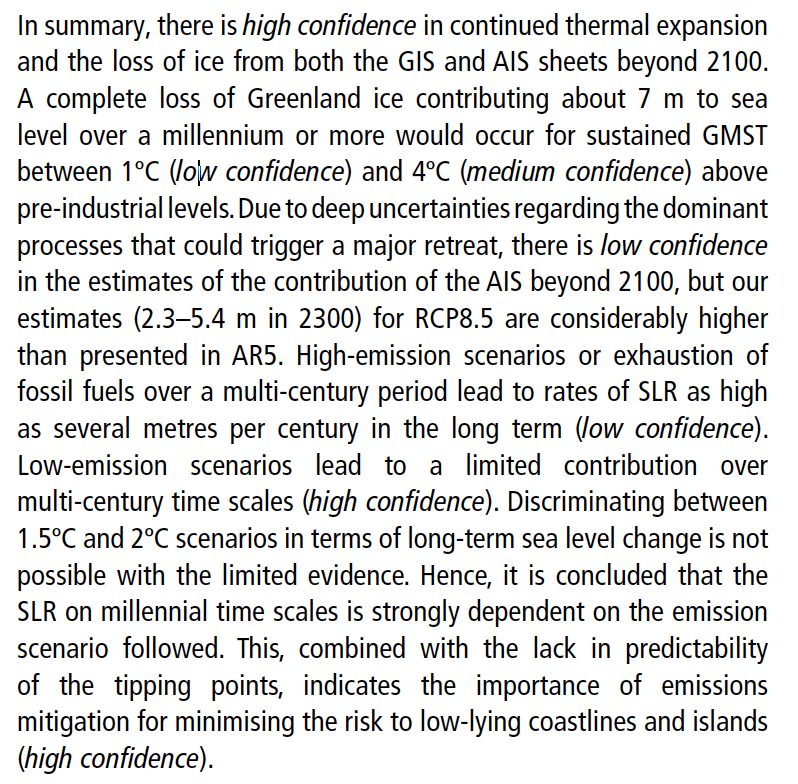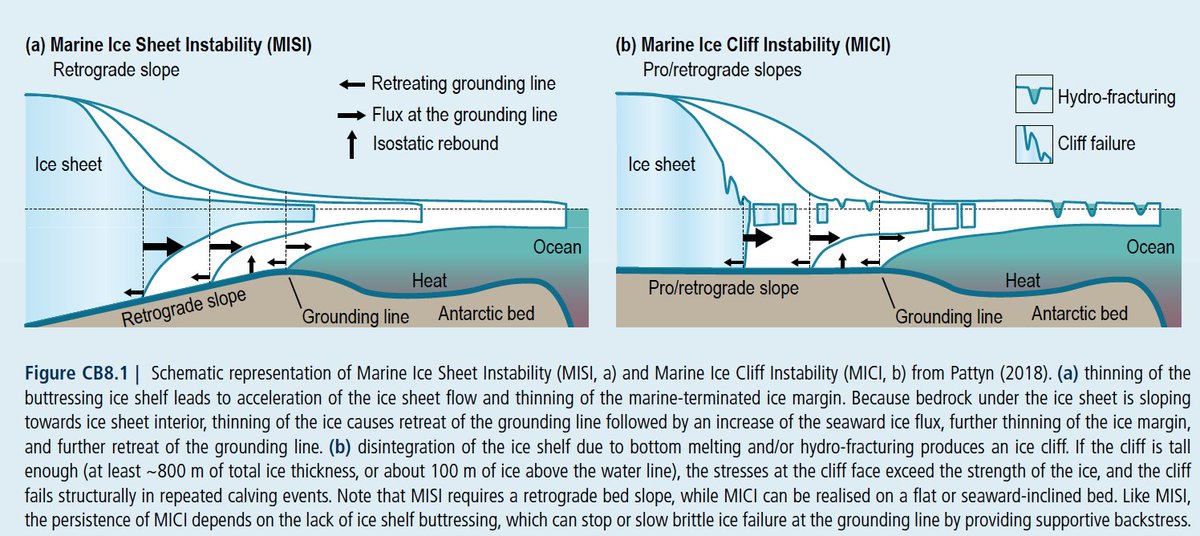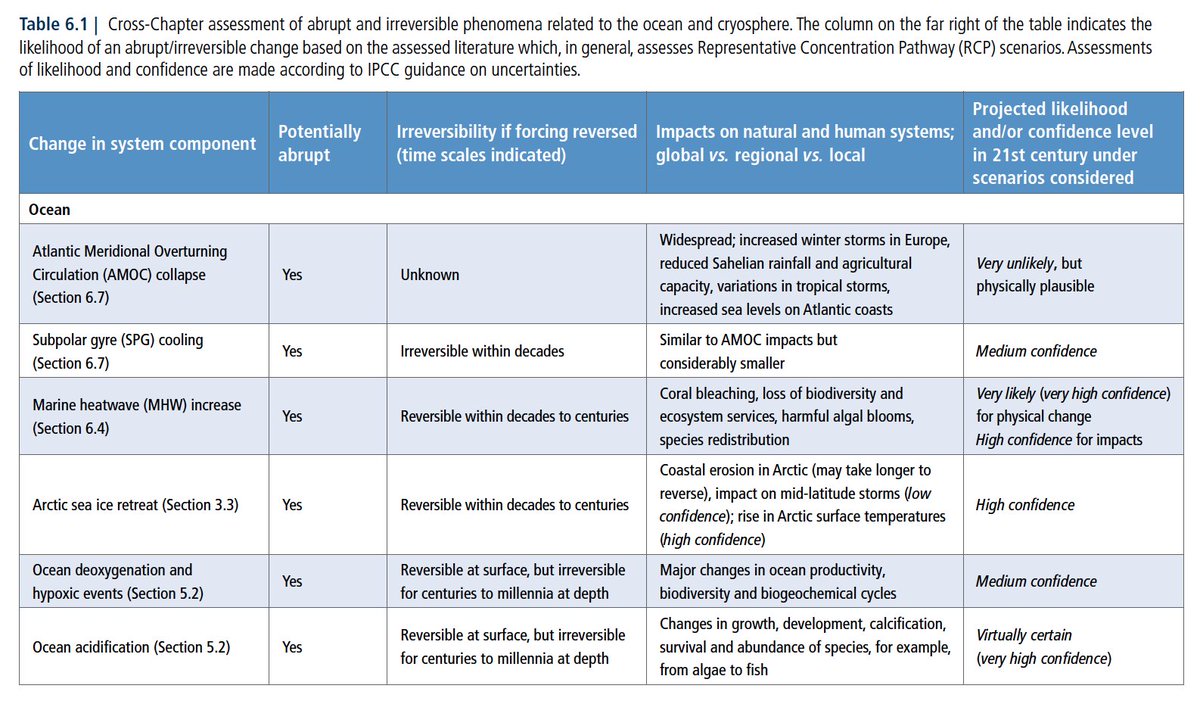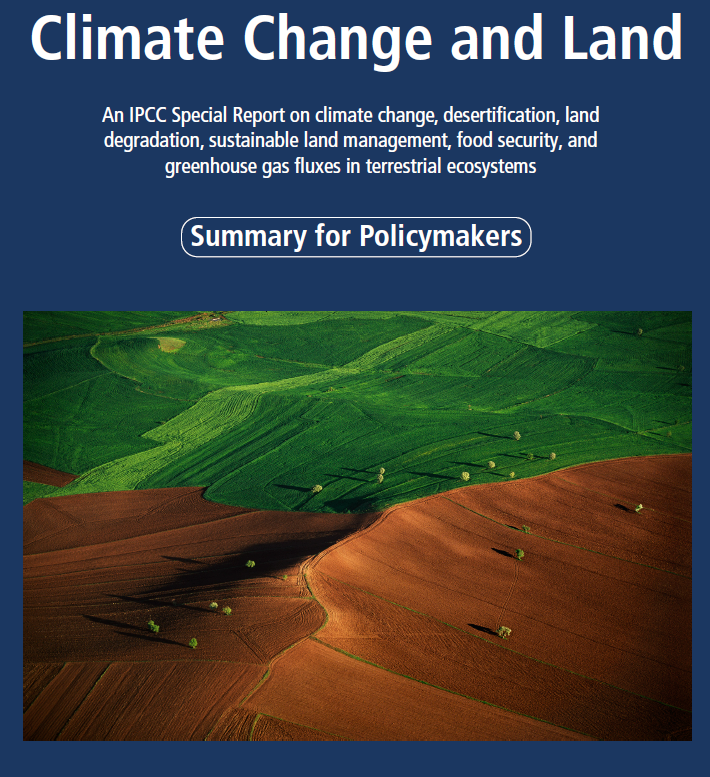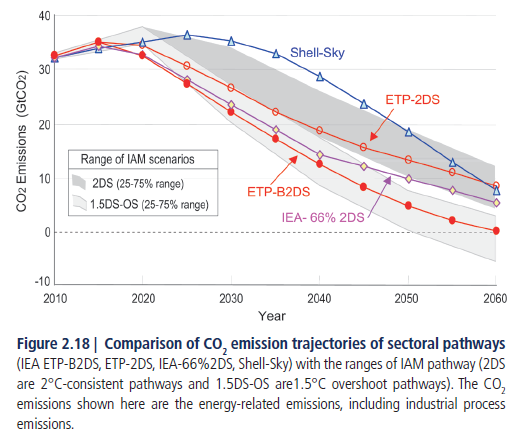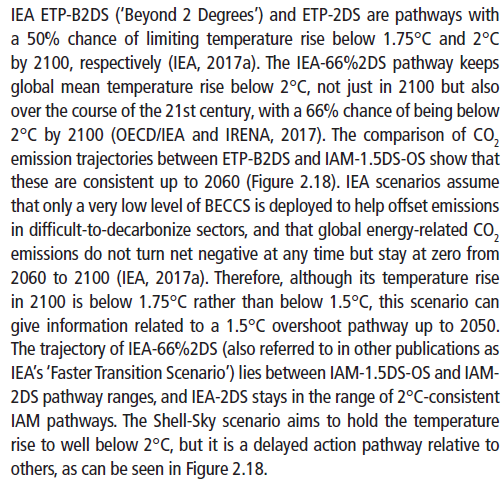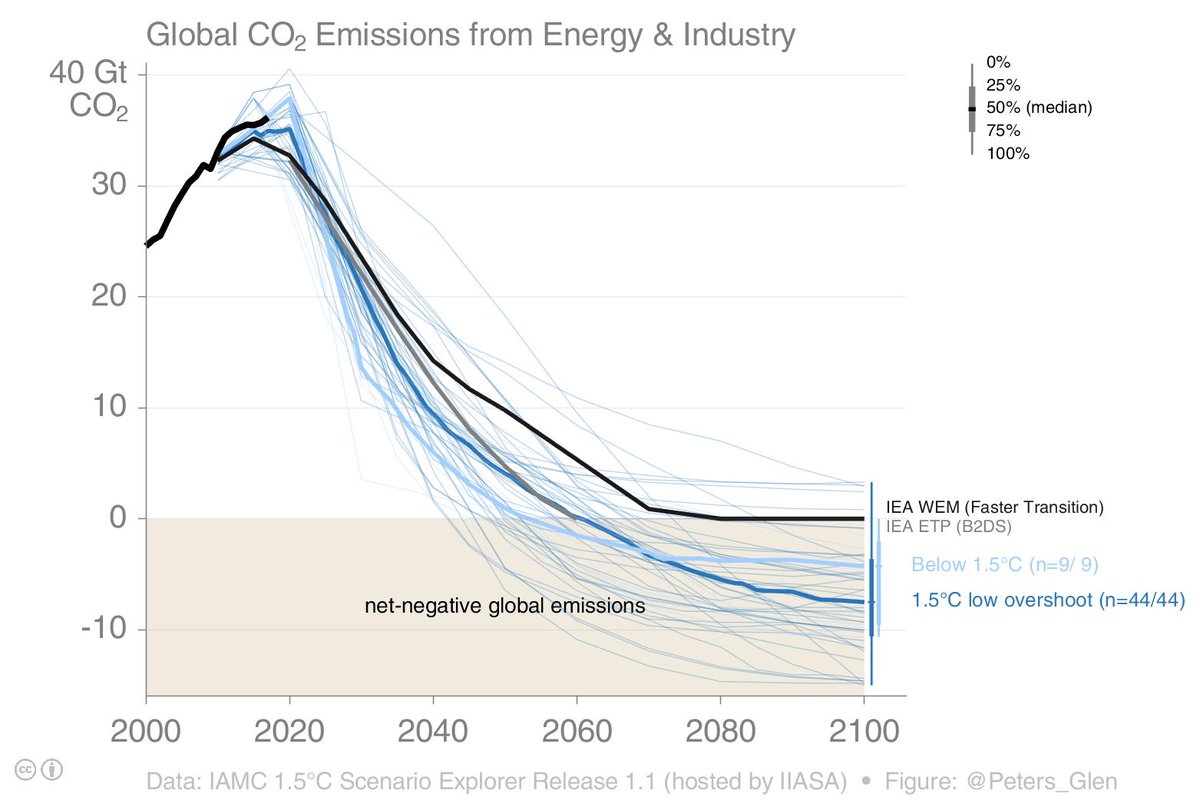
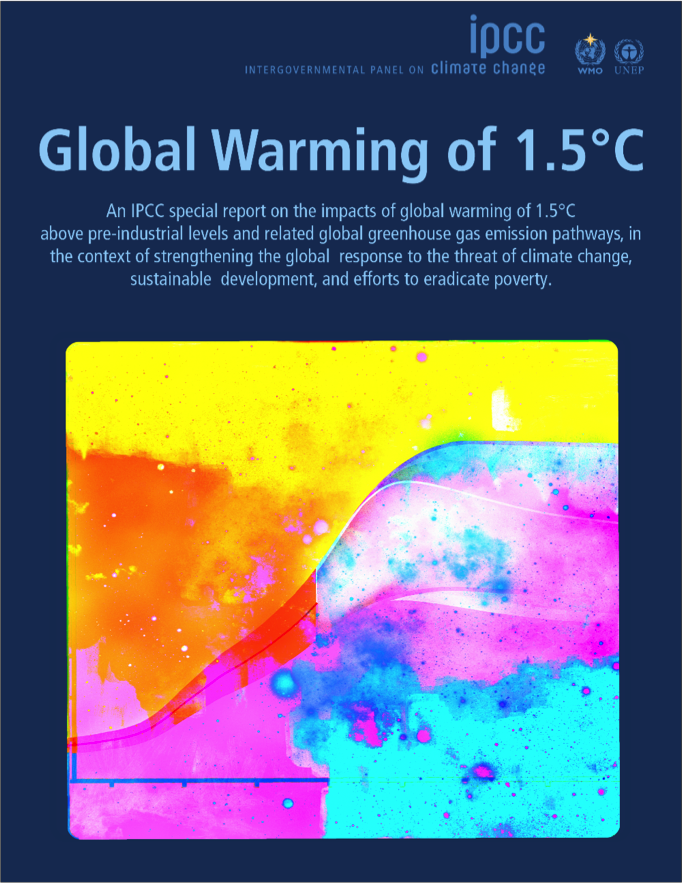
is now located at 1°C of global warming and high risk is
located at 2.5°C of global warming, because of new
observations and models of the West Antarctic ice sheet (with medium confidence).
ipcc.ch/sr15/chapter/c…

Antarctica or irreversible loss of the Greenland ice sheet
- it is more likely than not that the AMOC has been weakening in recent decades,
- there is limited evidence linking the recent weakening of the AMOC to anthropogenic warming
- there is no evidence indicating significantly different amplitudes of AMOC weakening for
1.5°C versus 2°C of global warming, or of a shutdown of the AMOC at these global temperature thresholds.
No evidence of a tipping point for Arctic sea ice itself (different of course for related ecosystems or species).

ipcc.ch/srccl/




several major Amundsen Sea outlets, including Thwaites, Pine Island, Smith, and Kohler glaciers
projections of the sea level contributions from the Antarctic ice sheet.
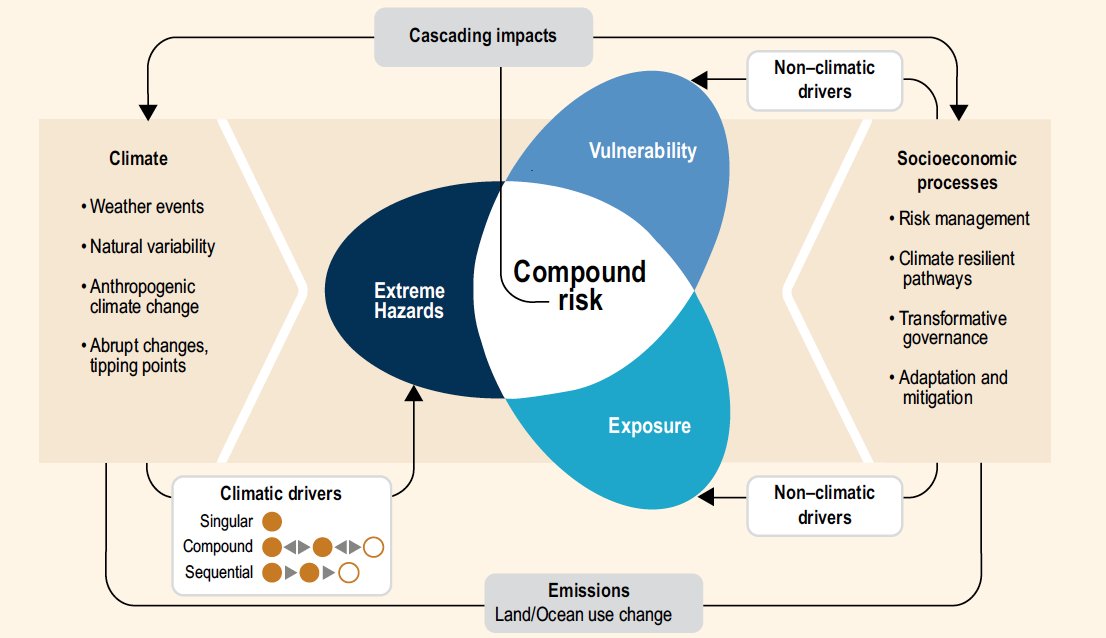

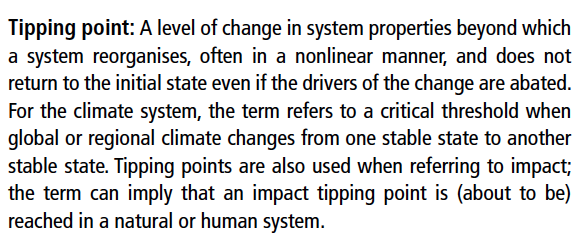

surface temperature reconstructions, indicate that the Atlantic Meridional Overturning Circulation (AMOC) has weakened relative to 1850–1900
rainfall,
there are considerable knowledge gaps in adaptation responses to a substantial AMOC weakening.
sheet instability.
atmosphere, ocean and the ice sheet
a collapse of parts of the Antarctic Ice Sheet entails, this high impact risk merits attention
adapted to unforeseen conditions) often prefer to use the likely range of projections,

